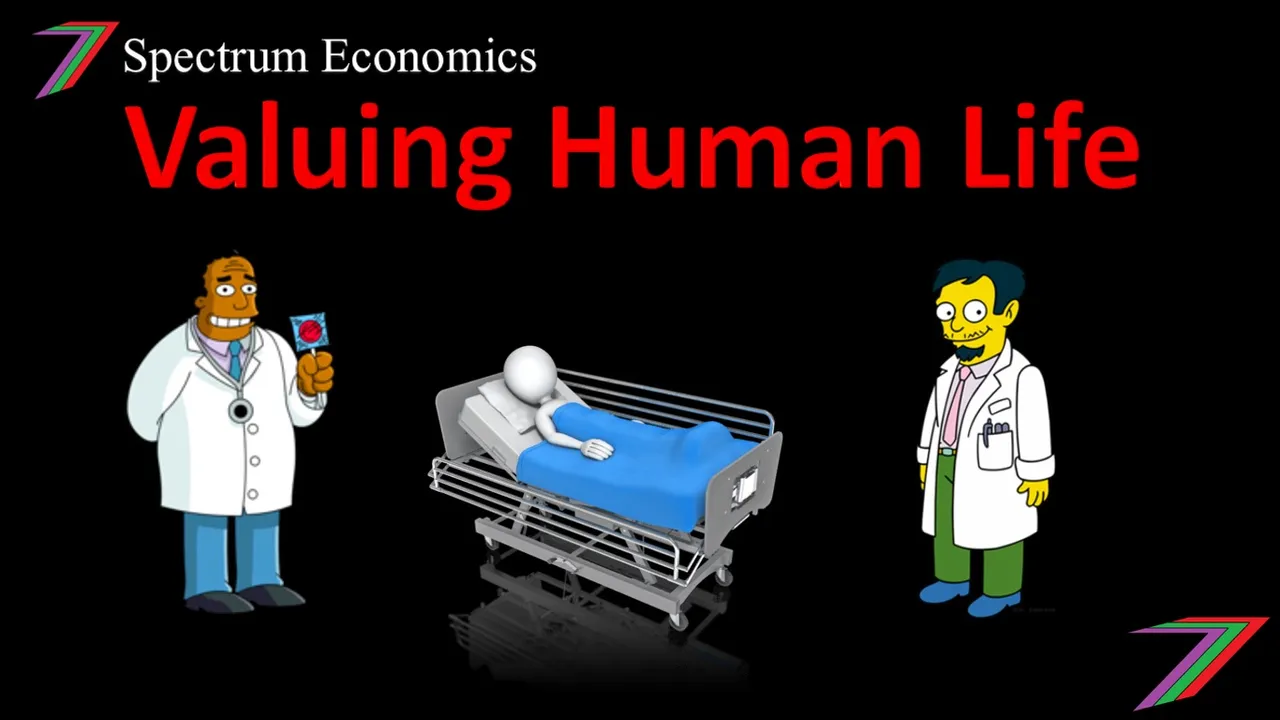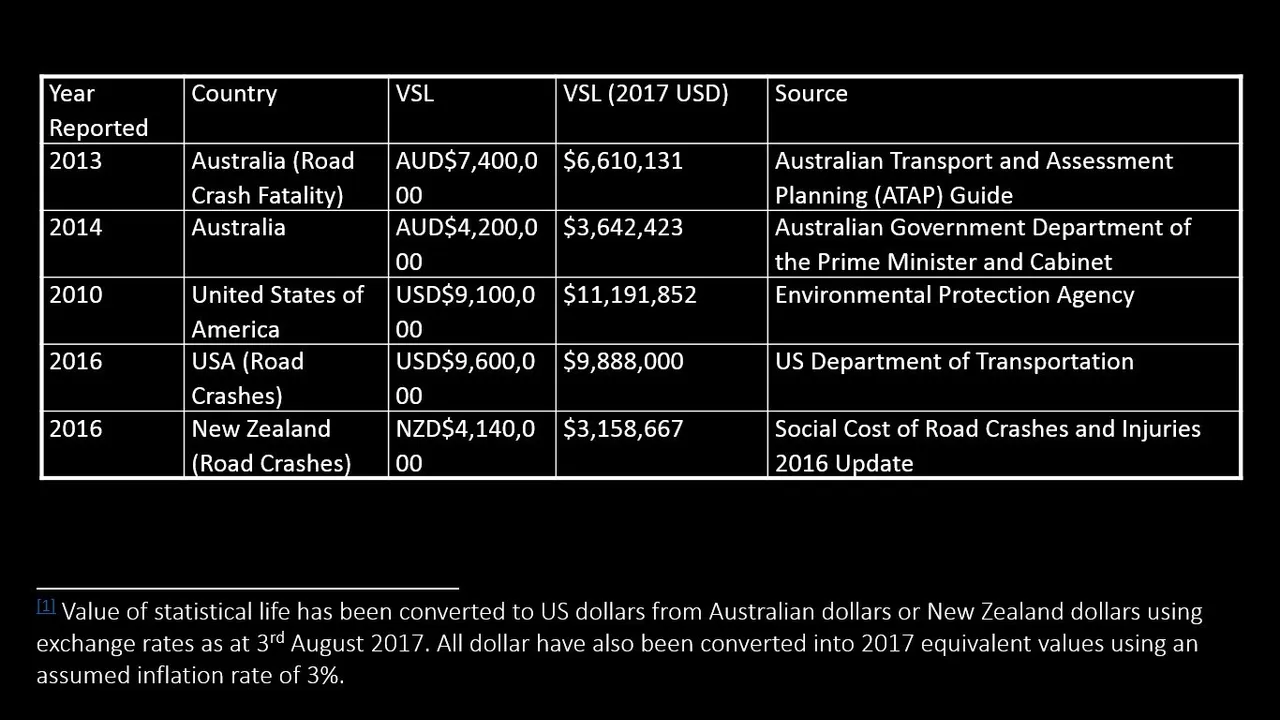Hi Everyone,

This is my second post in my valuing life series. In my first post Cruelty-free Economics - Valuing Life (Third Revision) (Part 1), I provided a brief introduction to my approach to valuing the life of different species. In this post, I will be focusing on explaining how the value of human life is typically determined. This is the first step I am taking to evaluate the value of life of others species, which I briefly described in the first post in this series.
Value of human life

Many studies have been conducted in an attempt to establish the value of human life. The values obtained have varied dramatically depending on the approach used as well as the source of data. The most common approaches are the Willingness-to-pay Approach and the Human Capital Approach.
Why do we need to place a monetary value on life?

Before even attempting to determine a value for human life, we should ask why it is even necessary to determine a monetary value for life. Expressing life as a monetary value can appear demeaning as well as oversimplifying our existence.
I first came across value of life, when I was an economist conducting cost benefit analysis (CBA) for Government projects. Many government infrastructure projects relating to health, road, and transport are aimed at reducing loss of life. In order to include the benefits of reducing loss of life in an analysis, a value of life needs to be determined. Expressing all benefits and costs of an initiative simplifies the outputs of an analysis to monetary number such as a Net Present Value (NPV) or a ratio such as a Net Benefit Investment Ratio (NBIR).
Human Capital Approach

Human Capital Approach was typically used to evaluate the cost of human life prior to the further development of the Willingness-to-pay Approach. Human Capital Approach was very commonly used for road and transport CBA.
Human Capital Approach considers both direct and indirect costs relating to an incident that results in a loss of life. These costs include loss of future income, legal and prosecution costs, loss of labour in the household, ambulance costs, funeral costs and several more (Defined Term). Human Capital Approach is considered easier and more reliable to calculate, as most information required to determine a value is reasonably easy to obtain.
Willingness-to-pay

Willingness-to-pay is gaining more popularity and is gradually replacing Human Capital Approach as the preferred approach to determine the value of life. Willingness-to-pay is an approach that determines value based on what people are willing to pay to obtain or avoid something. In regards to life, willingness-to-pay could be determined by how much someone is willing to pay to avoid or reduce their chances of death. A possible example of this could be how much a person is willing to pay to install extra safety features in their car.
There is a general consensus amongst economists that the willingness-to-pay approach is more accurate at determining value, from a theoretical standpoint, than the Human Capital Approach. However, the Willingness-to-pay Approach is difficult and time consuming to apply in the real world.
Below, in Table 1, are some values for statistical life that have been converted to US dollars.
Table 1: Value of Statistical Life

As can be seen from Table 1, the values of statistical life can vary considerably. Values range from $3,158,667 to $11,191,852. The wide range of values makes it difficult to ascertain the most representative value for human life. The values vary because of different methods of collecting data as well as evaluation techniques.
The two evaluation techniques typically used are contingent valuation (sometimes referred to as stated preference) and revealed preference. Contingent valuation is a non-market survey-based economic technique used to evaluate impacts to society. These impacts cannot be assessed through normal market forces. Surveys are structured to determine what people are willing to pay to obtain or avoid certain impacts. Revealed preference obtains information regarding behaviour through observation, often of expenditure patterns. Revealed preference theory can be used to determine utility functions to help explain human behaviour (Building Queensland 2016).
How will I be applying value of human life to other species?

I do not propose to calculate a value for statistical life. Instead, I intend to take an average of the available existing values such as the values presented in Table 1. I will also sensitivity test my derived values using the maximum and minimum values of statistical life. This will provide me with a range of results.
I will be adjusting the values for another species based on intelligence and life expectancy. I have briefly explained this approach in Part 1 of this series; I will explain in more detail in future posts in this series.
I am also developing an alternative model for evaluating quality of life as well as value added. This model moves away from monetary values but instead analyses quality in regards to time. This model will focus on the quality we add to our own lives as well as those that we engage directly or indirectly with.
Thank you for taking the time to read this post. I have several more posts to come in this series.
Post Beneficiaries
The beneficiaries of this post based on the top three upvotes (Votes bought from MinnowBooster have been excluded) of the previous post are:
In addition to these three accounts, @vegoutt-travel has been added as a beneficiary based on comments provided. Each beneficiary will receive 20% of the post payout. Thanks for your support.
For more information on @spectrumecons post beneficiaries, click on the link below.





